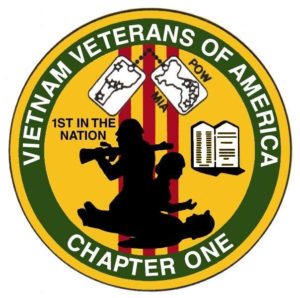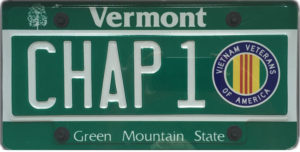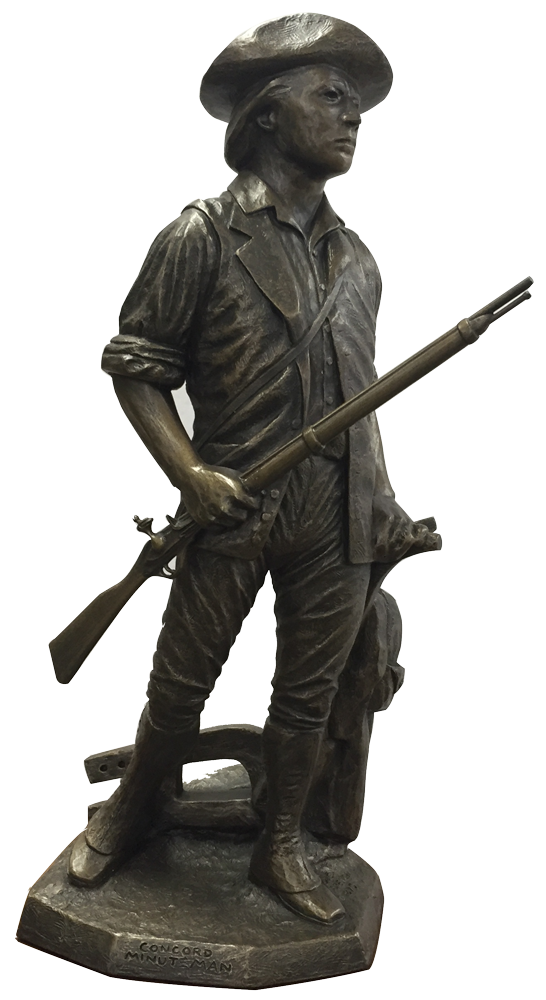
History of VVA Chapter 1
(This article first appeared in the Feb/March 1998 issue of The VVA Veteran)
“Like it or not, we’re here!” Founding President Robert O. Muller remembers Don Bodette and Jake Jacobsen telling him. Vietnam Veterans of America is 20 years old this year. How and where did it begin? Many trace the VVA’s founding to Muller, but there is more to the story than that.
“We were going nuts in Washington with the legislative battles on Agent Orange and other issues,” said Muller in a recent interview. “I told him [Donny Bodette] that we just couldn’t do it. We didn’t have the time to deal with a membership organization and chapters.”
Chapter 1. It sounds like a mythical entity whose story is passed from generation to generation in the oral history tradition. The fables and stories that surround these mythical entities are designed to provide an ethical and moral framework for those who follow. Chapter 1 is real. Chapter 1 is, was, and forever shall be in Rutland, Vermont.
Rutland lies midway between Bennington, where British troops were defeated by American revolutionaries in 1777, and Burlington, the largest city in the state. The Green Mountain National Forest is to the north and south, and Killington Ski area is just a few miles east.
It is not exactly the kind of place you would expect to find the first chapter of a newly formed national veterans service organization whose technique in the early years consisted of battering doors down, rather than knocking on them.
Jake Jacobsen remembers it was in the 1970’s when he came across an ad in his local paper. The ad said, “Vietnam veterans, we need to talk.” Jacobsen had already started looking for the wounded and thought this would be as good a place as any to find others who felt as he did.
He answered the ad and met Donny Bodette. “Politically, I was Mr. Right, and he was Mr. Left,” Jacobsen remembers. “But we did have one thing in common. We both agreed on the one principal thing we had in Vietnam, camaraderie.
“It was the kind of camaraderie that most Americans don’t understand. It was a welding of the soul.” Bodette and Jacobsen felt that if the souls of Vietnam veterans could be welded in war, there was no reason why they couldn’t be welded in peace, at home, in their communities.
“Donny and I met Bobby Muller in Donny’s living room,” Jacobsen says. “Bobby didn’t want a chapter-based membership organization; he wanted a hemorrhoid in Washington D.C.” By this time, the local group had grown more than three dozen Vietnam veterans. Bodette convinced Muller that a lobbying organization wasn’t enough. When Muller insisted that a chapter organization wasn’t the right way to go, Bodette told him, “You already have your first chapter!”
 Thus the national chapter-based membership organization was established. The first several meetings of Chapter 1 were geared toward understanding the mechanics of paperwork and the other necessities of an infant organization. Bodette, for all his focus on a membership organization, never pushed membership in the chapter. His philosophy was simple: “Together then, together now.”
Thus the national chapter-based membership organization was established. The first several meetings of Chapter 1 were geared toward understanding the mechanics of paperwork and the other necessities of an infant organization. Bodette, for all his focus on a membership organization, never pushed membership in the chapter. His philosophy was simple: “Together then, together now.”
“We kept things simple and uncomplicated,” Jacobsen says. “If we could get Vietnam veterans to feel good about what they did in Vietnam, maybe we could get them to do it at home!” Membership was the logical outcome of an increased profile in the community.
Dick Doyle, who lives 50 miles away from Rutland in Bellows Falls, joined the chapter in 1991. After reading an announcement in the chapter newsletter about a trip to the Dedication of the Vietnam Women’s Memorial in 1993, Doyle said to himself, “I better get involved. I attended a Region 1 picnic and met Linda Schwartz, and I was hooked.”
Doyle remembers meetings in coffee shops and VFW basements, and wooing potential members whenever and wherever the opportunity presented itself. He is proud that the chapter lays claim to members from across the country. “We have members from Alaska and California,” he says. “In the last three years, we have increased membership by over a hundred. I have recruited many of them from the Internet and the VVA list server.”
Although the chapter claims no Canadian members despite sharing a common border, Doyle says the chapter and the Vermont State Council work very closely with Canadian Vietnam veterans. “We worked with the Canadian Vietnam veterans when The Moving Wall was in St. Albans,” he says. “We’re not the biggest chapter, and we don’t have a lot of money, but we’re there for each other and the community.”

One of the ways the chapter works for the community is through the Veterans Assistance Office (VAC) in Rutland, which it helped to establish. “If we could stop a vet from blowing himself away, or deliver food to a hungry veteran and his family, that’s what we would do,” says Jacobsen. The VAC became a gift to the city of Rutland, which established its own non-profit corporation to continue the work the chapter had begun.
Clark Howland, one of the earliest members of Chapter 1 and of VVA, is the director of the VAC, which is housed in Dodge House, named for Mike Dodge, one of the original members of Chapter 1. Dodge was involved with the original idea for the project. He committed suicide at the Northhampton, Massachusetts, VA hospital in 1987, 50 feet from the nurses’ station,” Howland remembers. “We loved him, and it demolished us when he committed suicide.”
“We wanted to help all veterans, not just the Vietnam-era vet,” says Howland. “Because of some restrictions in VVA’s charter, we felt it would serve our community better if VAC set up its own organization.” In the beginning the project faced resistance from the traditional veterans organizations in the area, including the American Legion and Disabled American Veterans. “There was a rift between World War II veterans and Vietnam veterans,” Howland remembers.
“Our relationship with VVA and Chapter 1 has always been there and always will be,” Howland says. Current Chapter President John Bergeron notes that involving the entire community in chapter activities has helped educate veterans and non-veterans alike. “Over the years the level of activity in the chapter has been up and down, but we have a new batch of members, and it has breathed new life into the chapter,” he says.
Bergeron’s cobbler shop in the center of town helped spur activity, as well. “I have VVA posters in my shop window, and some days I’ll have five or six people come in and ask about the organization,” he says. “I can work and talk with them at the same time, and it has really helped educate folks about who we are.”
Much of the chapter’s energy for a period of time was focused on building a memorial to Rutland County residents who served during the Vietnam era.
Chapter 1 also is involved in an educational outreach program with area schools. In addition to having teams of Vietnam veterans going to the schools, the Superintendent of Schools is interested in formalizing and expanding the project. “Our activities continue to attract new members all the time,” Bergeron remarks. “We are involved in the community, and we support each other.”
Join Us
To learn when our next meeting is, Please go to the end of our most recent newsletter under the "NEWSLETTERS" section.